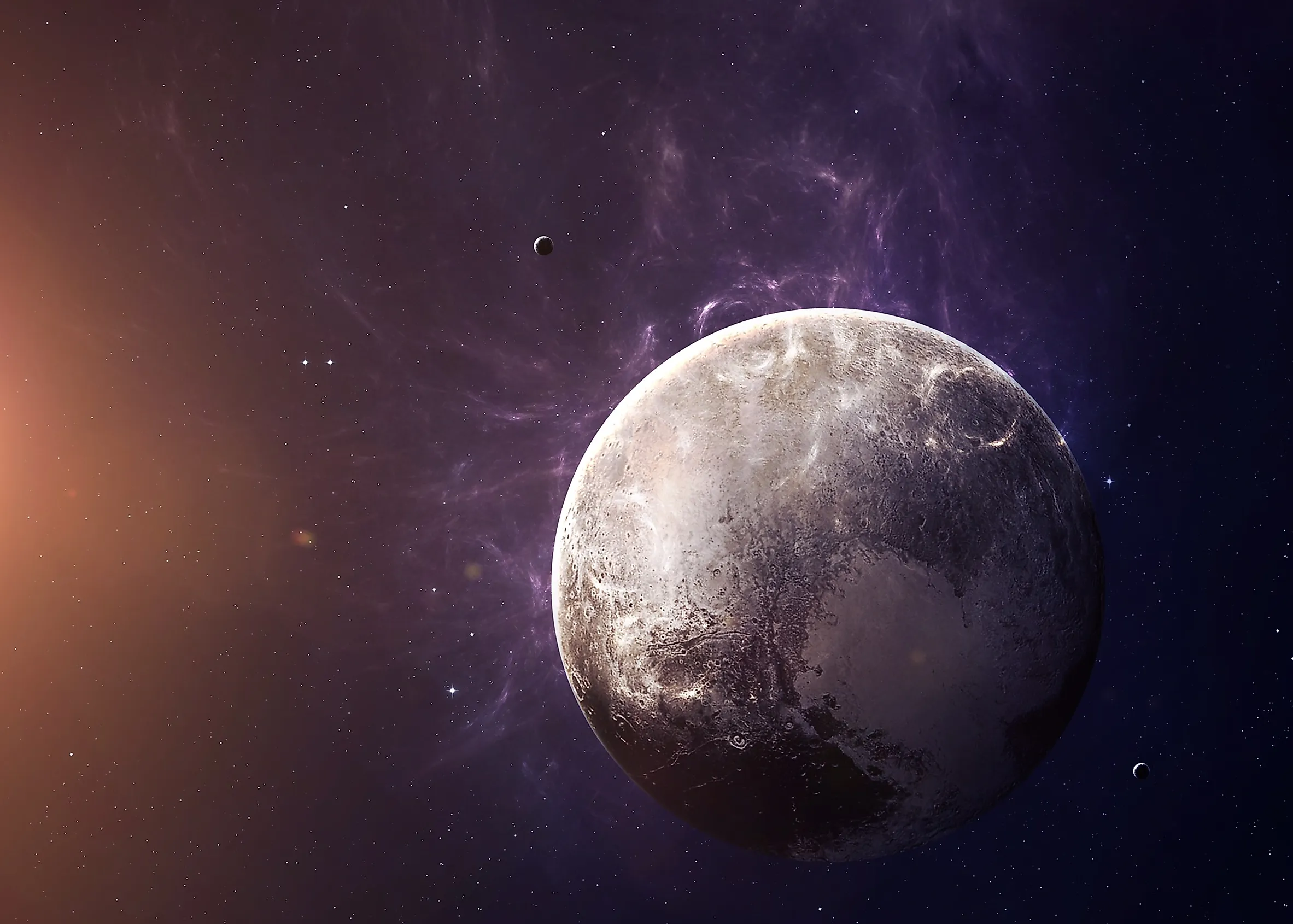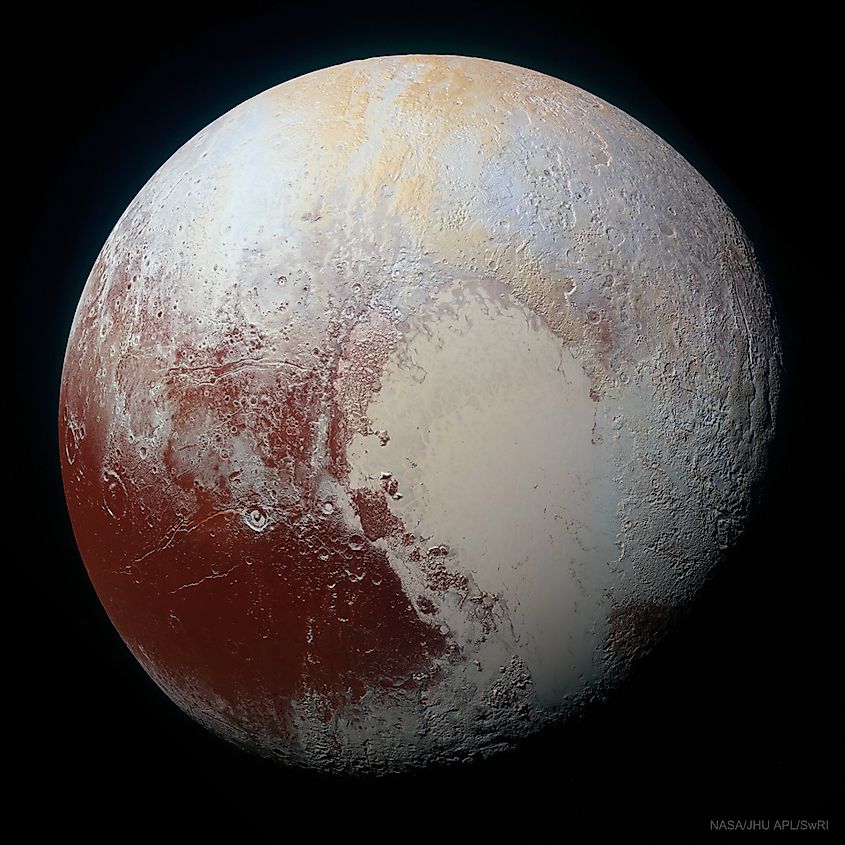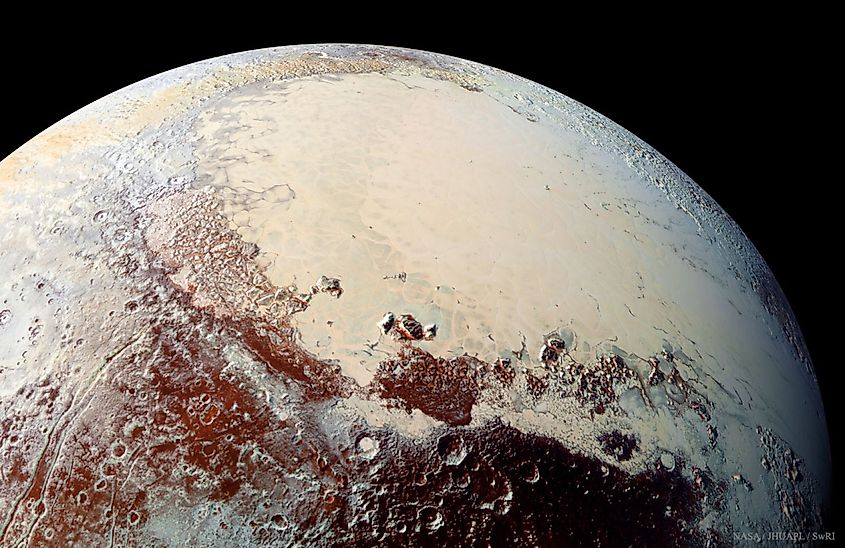
How Far Away Is Pluto?
On average, Pluto is 3.7-billion miles (5.9-billion kilometers) from the sun. This equates to 39 astronomical units (AU). Astronomical units are a unit of measurement used by astronomers where 1-AU is equal to the distance between the sun and Earth or 93-million miles (150-million kilometers). It takes Pluto 248 years to complete one orbit around the sun. For perspective, this means that Pluto has not completed a complete orbit since its discovery in 1930. All the planets in the solar system orbit elliptically along the same plane, but Pluto’s orbit is tilted 17-degrees off the plane the other planets orbit along. The ellipse Pluto orbits in is also more exaggerated than the orbits of the other planets. In astronomy, this is called a more eccentric ellipse. This is best shown in the difference between Pluto's closest approach to the sun and its furthest approach.
Closest Approach

At its closest approach, Pluto is approximately 30-AU from the sun. This equals about 2.8-billion miles (4.5-billion kilometers) from the sun. During this period of the orbit, Pluto is closer to the sun than Neptune is. The last time this happened was between 1979 to 1999 and it has since moved out of Neptune’s orbit. It will take another 228 years for Pluto to make it back. Since Pluto crosses over the orbit of Neptune it raises the question of whether Pluto and Neptune will ever collide. The answer to this lies in the 17-degree incline in Pluto’s orbit. When Pluto passes into Neptune's orbit, it is much higher up than Neptune is, so they will never collide with one another.
Furthest Approach

At its farthest approach, Pluto is approximately 49-AU from the sun. This puts Pluto’s orbit well into the Kuiper Belt. The Kuiper Belt stretches from about 30-AU to 55-AU and is home to most of the solar system's dwarf planets. Pluto is the largest celestial body in the Kuiper Belt, which is why it was the first to be discovered and why astronomers had initially classified it as a planet. Over time, astronomers discovered more celestial bodies in the Kuiper Belt that were more like Pluto than the other planets, which led to the reclassification of Pluto as a dwarf planet in 2006. There is a bigger difference in distance between Pluto’s closest and farthest approach to the sun than any planet. Mercury is the only planet with a more eccentric elliptical orbit but it is not nearly as extreme as Pluto’s.











